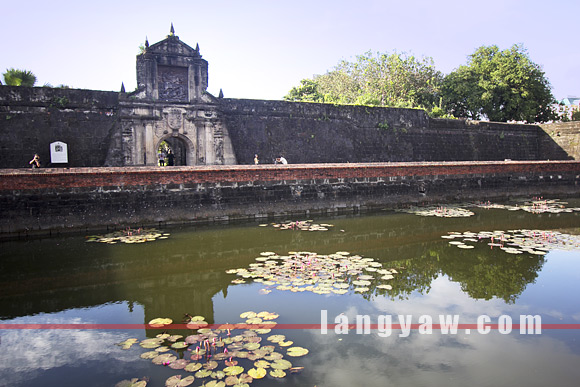
WINNER OF INTRAMUROS BLOGGERS CHALLENGE 2012!
If its walls could talk, it would have told us countless stories and memories and gossips of what was once the opulent center of the ever loyal city of Manila. Within this enclave, from where the political and religious power emanated during the Spanish colonial era, are richly decorated churches of the major religious orders, elegant government buildings and houses of the rich and notable that made this fortified city a showcase of the West in the Orient.
Intramuros. Within the walls.

Built over the remnants of the Muslim settlements of Rajahs Lakandula, Matanda and Sulaiman III at the mouth of the Pasig River, a very strategic location as it controls access to the river Pasig, Miguel Lopez de Legazpi and his men established the city of Manila as the new capital of the colony. The walls were constructed in 1590 and over the years, Intramuros took its shape.
Over the centuries, where earthquakes, fires, typhoons and the British invasion (1762-1764) of Manila took its toll of the structures within the walls, nothing compared to the ravages of World War II where Manila suffered the brunt of the war to become the second most destroyed city in the world and Intramuros wasn’t spared. When the dust settled, it was only the church of the Augustinians, was left standing.
In the 1970s, when the Intramuros Administration was created, slowly, the once beautiful city was restored. Today, Intramuros, while a far cry from its rich past, is one of the country’s top showcase of its colonial past.


The old Fort Santiago, located at the northern tip, still stands. It’s main gate, then badly damaged during the war was restored.
To many Filipinos, this is no ordinary fort. Its main significance is that it was the place where the Philippine national hero, Jose Rizal was encarcerated and sentenced to death by musketry in the waning years of Spanish rule.

In one of the old buildings, now the Rizal Shrine and museum, holds memorabilia and various homages to the national hero. It includes showcases of his sculptural works, writings, a piece of bone as well as some pertinent photos.
Across the building, at the Plaza de Armas, where soldiers used to hold drills, is a bust of Rizal at the center. A few steps from here is also his cell where he walked to his death in Bagumbayan with metal footsteps tracing his route.


The Intramuros of old was made important with the mother churches of the major religious orders. Sadly, after the war, only the Manila Cathedral and the Augustinian church, the oldest stone church in the country, were left standing.
The Manila Cathedral, the seat of the Archbishop of Manila is the eighth structure to be built on the same site after a series of cataclysms, both earthquakes, fires and the British invasion destroyed the previous structures.
Other churches of note, like the Sto. Domingo (Dominicans), Lourdes Church (Capuchins), San Ignacio (Jesuits), Recoletos Churchs (Augustinian Recollects), San Francisco (Fransciscans) and its perpendicular church of the Venerable Orden Tercera (VOT) are now just distant memories.
However, there are plans to restore San Ignacio, now in ruins, where the collections of the Intramuros Administration will be kept.

The mother of all Philippine Churches, San Agustin stands proud. Finished in 1604, it has withstood the test of time and earthquakes. During World War II, it only suffered a hole at what is now the Legazpi Chapel and some bullet riddled bells and walls.
Walking its corridors is like traveling through time as the church is also a monastery with its layout following those once practiced in Europe and Mexico. At its choir loft is one of the country’s treasures: a complete set of misercordias or mercy seats and facistol that were carved in the 17th century and bears striking oriental features.
Walking down General Luna St., on its cobbled portion brings back memories of the old Intramuros. The reconstructed period houses fronting San Agustin shows different construction and architectural styles that were once present in the walled city.
The Intramuros of old, still pervades and its spirit very much alive.
——
IBC 2012 is fully supported by the Intramuros Administration, Barbara’s Restaurant, Celdran Tours, Mabuhay Guides, Pilgrimage Pilipinas, Castillan Tours, Federation of Philippine Photographers Foundation, Inc., DigiEntrepreneur, DigitalFilipino, Third Team Media, Payless Pancit Shanghai, Ruthilicious, Ruthilicious Fanpage and GadgetGambit.com.
Congrats! Just swinging by, please swing to my page too~! Salamat po~!